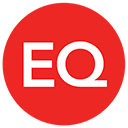 Login
Login
Services for Individuals

THE IPO REVIEW
Tune In To The Latest IPO Trends
Each quarter EQ explores the highlights and lowlights from across the IPO market.
Register today and discover:
• Emerging trends from across global exchanges
• Marco-economic factors impacting investor appetite
• Practical tips on preparing for IPO
By submitting your details, you confirm that you agree to the processing of your personal data by EQ as described in the Privacy Statement.
GLOBAL OUTLOOK

Paul Matthews, CEO, EQ Boardroom
For the second year running we ended 2021 by wondering whether a new variant is going to scupper global recovery. High energy prices, political pressure and supply breakdowns also proved major obstacles for industry, while guidance on gatherings once again dampened much of the Christmas spirit.
However, between beta and omicron, capital markets showed remarkable resilience. Investors kept exchanges highly liquid, in turn encouraging a strong global rebound in IPO activity.
EQ was proud to play its part by bringing great businesses both domestic and overseas to the market in the course of 2021. In the coming year, we look forward to using our experience and expertise to help even more companies realise their corporate goals.

Recovery Not Completely Ruled Out
This was an uncomfortable twelve months for big business and its investors. Governments around the world had put together support and stimulus packages through the worst of the pandemic and continued to intervene with new rules and regulations as the threat appeared to recede.
In the US and China particularly, newer industries came under exceptional political pressure over data management, content responsibility, workers’ rights and competition, while older industries felt the heat on their environmental credentials. There seemed little respite in other jurisdictions with the G-20 championing a crackdown on low tax havens and the introduction of a global minimum rate, supported by 130 countries.
It was therefore all the more remarkable that 2021 produced the most buoyant IPO market for a generation – up two-thirds in volume and proceeds – and that the revival was led by tech. Volume and performance were not consistent throughout the year, however, stalling in the second quarter and trailing off again at the end of the year. There were also significant postponements in coming to the market, especially in China, where regulators blocked and tackled even its highest profile companies.
Health and cyber security benefited from humanity’s growing awareness of its vulnerability to both kinds of bugs. Healthcare broke even 2020’s incredible IPO run and was the second-best performing sector behind tech. HKEX overtook NASDAQ for life sciences, which also now accounts for roughly half the market value of companies on of Shanghai’s STAR. With IT threats on the rise, SentinelOne became the world’s highest value cybersec at $11bn in New York, while London hosted Darktrace with a market cap of £1.7bn and saw shares rise 40%.
New York claimed first and second spots for IPO proceeds in 2021, with NASDAQ remaining the overall top exchange for volume of deals as well as raises at $98bn. Hong Kong was the only exchange to slump, falling from second to fourth place in capital raised and fourth to tenth in the number of deals. The ever-stronger performance of STAR under more flexible listing criteria helped Shanghai take third place for proceeds, with London unchanged at sixth place but with near-doubled proceeds at £16bn.

2021 was a year of reform for London. Lord Hill’s Listing Review sought to bring regulations more into line with competitors after appearing to lose out to New York and Europe on high profile major techs and SPACs.
The FCA picked up the baton and its speedy rule changes came into force in December. The minimum value of companies on the main market now increases from £700,000 to £30,000,000 but there is a decrease in the minimum share offering from 25% to 10%.
London had long held out on the single share, single vote principle, but this put off newer companies, especially techs, whose founders liked to retain control post-IPO with dual share class mechanisms.
The reforms come just as London is facing its strongest-yet challenge from the continent, with Stockholm accelerating fast and Amsterdam mopping up on SPACs. Combined, the two European exchanges totalled more than London for proceeds for the first time in modern history. Amsterdam hosted Europe’s biggest raise of $3.9bn for Poland’s InPost, Stockholm the second with $2.7bn for Volvo and Frankfurt the third largest with $2.6bn for mast operator Vantage Towers.
London did, however, enjoy its strongest first half for IPOs since 2014. Deliveroo demonstrated an innovative approach to IPO inclusivity for staff and loyal customers and fellow unicorns Trustpilot, Darktrace and Moonpig saw strong trading on opening. More traditional companies also added to the cheer with Dr Martens and Victorian Plumbing especially successful.
The second half saw lower activity on the back of increasingly evident supply chain issues and energy price fears and then Omicron. Successful raises by private equity firms Bridgepoint, Forward Partners and Peterhill Partners nonetheless pointed to confidence in UK investment opportunities. Money transfer company Wise, with a valuation of £8bn, and DNA sequencer Oxford Nanopore Technologies’ £4.7bn valuation in the last quarter also demonstrated that there was still plenty of buzz in London.
Overseas companies continued to beat a path to London in impressive numbers. Russian budget retailer Fix Price achieved a £6bn valuation and online advertiser Baltic Classified £1bn, while Canadian semiconductor manufacturer Alphawave IP raised £856m and Russian cybersec Softline £333m.
Welcoming the world to COP26, the UK also hosted a number of greentechs on its exchanges. HydrogenOne invests in de-carbonising industrial processes, while electric vehicle charger Pod Point also debuted. In the great race for battery improvement, London saw a successful raise in the final quarter for Sidney University spin-off Gelion, whose zinc bromide version improves on lithium and is usable in tougher climates.
Business resilience and ESG commitment rose in prominence for investors in 2021 as continuing pandemic concerns and heightened awareness of corporate sustainability from COP26 came to the front. Overall IPO activity reached record levels globally in 2021 despite supply chain issues, inflation and new concerns over the omicron variant in the later part of the year. As these factors impacted global recovery, some IPO-bound companies reassessed their timing looking for calmer waters for their public debut.
Despite these apprehensions, we have seen resilience from investors which provides optimism for 2022 listings. Comparatively high valuations coupled with market liquidity may provide the reassurance companies need to make the jump onto the public markets and at EQ we see a healthy pipeline of activity with flexible plans in place to react to potential market volatility.”
Robin Walker, Business Development Director, EQ DOWNLOAD THE FULL REPORT
DOWNLOAD THE FULL REPORT

A change of government in the USA saw scores of executive orders and a dozen federal agencies focused on ending market domination, especially in the tech sector but notably also in finance, pharmaceuticals, healthcare, agriculture and transport.
SPACs, as opposed to other IPO exchanges, provided the stiffest competition for capital in New York. SPAC activity reached frenzied heights in the first quarter then calmed down through the rest of the year.
This led to predictions that under greater regulatory scrutiny they have now passed their zenith, albeit nearly doubling proceeds to $153bn in 2021 compared to IPO proceeds from both exchanges of $156bn.
EV manufacturer Rivian Automotive achieved the largest float since Facebook, garnering $11bn and valuing the company at over $100bn (more than Ford Motors). Investors were no doubt looking at rival Tesla’s $1trn+ valuation and the backing of Bezos, through whose Amazon company a commitment of 10,000 vehicles has been made.
Robinhood’s listing stood out as one of the most watched IPOs of 2021. The millennials’ share trading platform of choice reserved a significant 25% of its shares for retail, but take-up was subdued, achieving a $30bn valuation in its $2.1bn raise.
Didi Global successfully raised $4.4bn against a $67bn valuation based on what then looked like a speedy post-pandemic recovery. Beijing almost immediately regulated away many of its licences and operations, causing an inevitable stock price crash. By December the company had decided on a return journey to HKSE next year.
With demand for microchips still outstripping supply at the year’s end, the third largest semiconductor manufacturer in the world, GlobalFoundries, was valued at $26bn on NASDAQ, supported by strong interest from Fidelity and Black Rock.
Although technology and pharma made most of the headlines, industrials and consumers also performed well. Sports shoe maker On was so popular in New York that the ticker named it twice. As ONON it raised $746m against a $7.4bn valuation on the back of strong sales in sixty countries, principally for its shoes designed by a Swiss champion triathlete and with Roger Federer as a consultant and investor.
The astonishing successes in the overall IPO market in 2021 may have created its own challenge for an equally robust IPO market in 2022. It is not often discussed in simple terms but there is a supply & demand component that does dictate the direction of even the Capital Markets. With the expected increase of spin-off activity which will add to the public company numbers and with a record number of SPAC entities still looking to close deals, the “going public” market will be tested in the new year.”
Joe Conte, Head of Corporate Actions, EQ (US) DOWNLOAD THE FULL REPORT
DOWNLOAD THE FULL REPORT

China’s big tech drove much of the country’s economic expansion and was in turn fuelled by access to international markets.
However, in 2021, Beijing made overseas exchanges far less accessible and reasserted the state’s authority over industry. This was to be an existential battle for both sides with a necessarily major effect on IPOs.
E-commerce and online platforms have the ability to grow very fast in China. It is a country of 980m internet users, more than the US and Europe combined. They all use the same language so the market reach is greater, while regulations ensure that outside competition is less of a threat. There is also a wider cultural acceptance of AI and digital services when they run out of humans, such as allowing robots to tutor children.
Beijing has grown increasingly suspicious of new industries – particularly data-heavy platform companies – and the power and profile enjoyed by some of the industry leaders. In a move which wiped a trillion dollars off Chinese techs worldwide, the government imposed billions of dollars of fines and set about trying to weaken monopolies and discourage overseas listings, citing security concerns. It also appeared to have cut the tallest of tech poppies, Jack Ma, down to size. Having criticised regulators and the state’s risk appetite in 2020, he re-emerged in rather quieter form in 2021 after what was termed a period of “studying and reflection”.
This coincided, ironically, with moves in the USA to blacklist many of the same Chinese firms for their closeness to Beijing. This resulted in a long march from NYSE to the Hong Kong and Shanghai exchanges, either after complete withdrawal or through secondary listings. Baidu, Bilibili and Weibo (respectively the equivalents of Google, YouTube and Twitter) raised $7bn between them in China and Hong Kong. TikTok’s owner ByteDance and Alibaba’s medical data company LinkDoc both pulled their NY listings. Ride sharer Didi ploughed onto NASDAQ against Beijing’s wishes and found crucial licences back home suspended and operations severely hampered until it changed its mind and joined the other so-called “sea turtles”, or companies returning home after a long absence.
Hong Kong had looked ready for a bumper year on the back of exceptionally strong demand for established and start-up biopharma IPOs. Returnees contributed significantly, including NYSE-suspended China Telecom with its standout raise of $8.4bn. This was after JD Logistics and Kuaishou Technology achieved $8bn of new money between them in the first half.
However, the political clampdown began to cause investors too many jitters and CTG, the world’s largest duty-free chain which was poised for a $5bn float, was one of many to postpone going public. The keenly-awaited listings of NetEases’s streaming arm Cloud Village and AI giant SenseTime failed to sparkle, with both cutting back on valuation ambitions.
The skies darkened further in the second half when the widespread concern over the leverage levels of the Chinese real estate market turned out to be fully justified. The government tried to take the heat out of the heavily debt-fuelled housing market at the same as Chinese junk bond yields surged. Loweryield bond issuers such as Kaisa and Evergrande were the earliest and most significant of a number of developers to find access to further capital difficult.
Evergrande employed 200,000 people and had a turnover of $110bn, so investors hoped it was too big to fail. However, the government declined to come up with a bail-out for the company’s $300bn debt and contagion in the sector spread until around a third of housing developers were considered at risk of default by the end of the year.
Chinese regulators have laid a path for companies returning from overseas exchanges but on the domestic front are presently more supportive of listing applications from smaller companies. Although mega-listings such as the paused chemical co Syngenta’s $10bn SSE raise could provide a major boost in 2022, the mood music from Beijing remains sombre and the ripples from the property sector look set to dampen Asian markets in the short term.
We treat all types of market entities on an equal basis, and we are working to develop a unified, open, competitive and orderly market system.”
President Xi Jinping READ THE FULL REPORT
READ THE FULL REPORT

2022 Outlook
The pandemic has made economic forecasting exceptionally difficult, based as it now is on shifting sand of very non-economic factors. However, the OECD predicts continued but uneven recovery with global growth of 4.5% for 2022. The patchiness in supplies and human resources will temper growth for large sectors of the economy but the OECD believes inflation has already peaked.
Techs and healthcare gained such momentum in 2021 that it would be hard to envisage a significant slowdown in IPOs from either sector. However, with data-heavy platforms under the microscope and populations beginning to take the pandemic more in their stride, investor interest next year can be expected to become more nuanced.
The pattern of cross-border listings seem likely to continue to change. The US exchanges raised $13bn for Chinese companies in 2021 but this level will be hard to maintain in the face of hardening regulatory borders and the experiences of Didi Global. Increasing capacity and liquidity on Europe’s domestic exchanges mean London will have to work hard to regain its previously guaranteed regional dominance and attractiveness to continental companies, although the recent reforms will go some way towards this.
IPO highlights are expected to be payments company Stripe with a $100bn valuation and grocery deliverer Instacart at $40bn, while will-they-won’t they Brewdog and TikTok owner ByteDance continue to tantalise.
Starting your IPO journey
Equiniti has many years’ experience bringing companies to market. From preparation, to launch, to life post-IPO. Our unbeatable service has supported the technical and logistical elements of the highest-profile listings in the UK, and we can do the same for you.
DISCLAIMER
The report does not constitute a comprehensive or accurate representation of past or future activities of any company or its shareholders. All data and descriptions of any company, business, markets or developments mentioned in this report, may be a combination of current, historical, complete, partial or estimated data. The report may include statements of opinion, estimates and projections with respect to the anticipated future. These may or may not prove to be correct. This report is not, and should not be, construed as a recommendation or form of offer or invitation to subscribe for, underwrite or purchase securities in any company or any form of inducement to engage in investment activity. All information contained in this report has been sourced from publicly available information and has not been independently verified. Neither Equiniti nor any of its affiliates, partners or agents, make any representation or warranty, expressed or implied, in relation to the accuracy, reliability, merchantability, completeness or fitness for a particular purpose of the information contained in this report and expressly disclaim any and all liability.